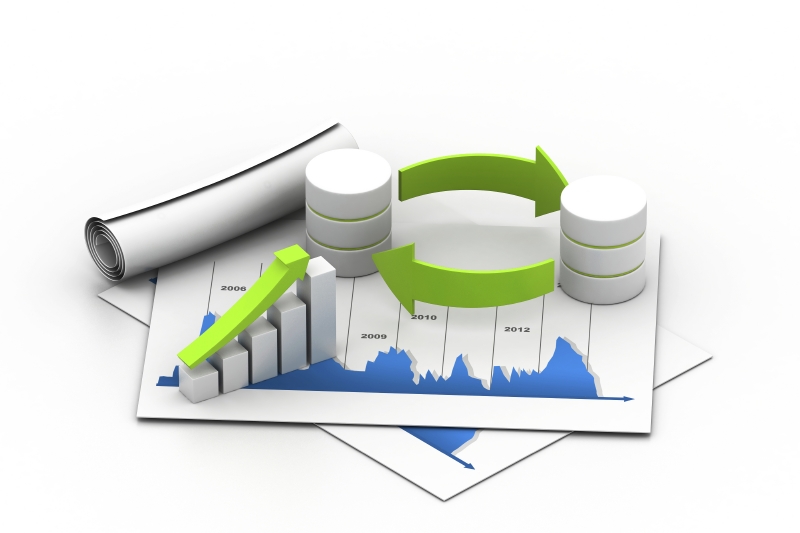
David Loshin says simple approaches to identity resolution may not scale on a big data platform as data volumes increase.

David Loshin says simple approaches to identity resolution may not scale on a big data platform as data volumes increase.

Jim Harris explains why data quality is such a fundamental aspect of master data management.

Joyce Norris-Montanari poses the question: Is Hadoop/big data technology actually ready for MDM?

.@philsimon chimes in on some oft-overlooked differences.

Do you know how master data management and data warehouses are different? Jim Harris explains.

David Loshin explains 4 struggles of syndicating master data across the enterprise.


Data-driven businesses outperform competitors. Matt Magne says SAS Data Governance and SAS MDM can help you get there.

Dylan Jones says spend time setting a vision of how to transform your data landscape – not debating definitions.

David Loshin explains why MDM is such a valuable tool in helping to detect fraud.

In my last post we started looking at the issue of identifier proliferation, in which different business applications assigned their own unique identifiers to data representing the same entities. Even master data management (MDM) applications are not immune to this issue, particularly because of the inherent semantics associated with the


How many companies are using Hadoop as part of their master data management initiative? Come on, raise your hands! Well, maybe a better question is this: How many companies are using Hadoop for enterprise data? From what I have seen, Hadoop is coming along quite nicely. However, it may not be the

Fellow Roundtable writer David Loshin has commented in the past that: "MDM is popular because it is presented as a cure-all solution to all data problems in the organization." Many people see master data management (MDM) as the silver bullet to all of their business and data woes. But in

.@philsimon on whether organizations need MDM to gather valuable insights about their customers.

Master data management (MDM) is distinct from other data management disciplines due to its primary focus on giving the enterprise a single view of the master data that represents key business entities, such as parties, products, locations and assets. MDM achieves this by standardizing, matching and consolidating common data elements across traditional and big

.@philsimon on what's next for MDM applications.

Master data management (MDM) is distinct from other data management disciplines due to its primary focus on giving the enterprise a single view of the master data that represents key business entities, such as parties, products, locations and assets. MDM achieves this by standardizing, matching and consolidating common data elements across traditional and big

Single view of customer. It's a noble goal, not unlike the search for the Holy Grail – fraught with peril as you progress down the path of your data journey. If you're a hotelier, it can improve your customer's experience by providing the information from the casinos and the spa at check-in to better meet your

Most companies are battling with master data challenges whether they realise it or not. When you're consolidating financials from multiple billing systems, you're doing MDM. When you're migrating legacy systems to a new target environment, you're doing MDM. When you're trying to perform root-cause analysis across multiple systems for a

.@philsimon on the role of MDM. TLDR: It depends.

In my last post, I discussed the issue of temporal inconsistency for master data, when the records in the master repository are inconsistent with the source systems as a result of a time-based absence of synchronization. Periodic master data updates that pull data from systems without considering alignment with in-process

.@philsimon on the collision between the two.

Master data management (MDM) provides methods for unifying data about important entities (such as “customer” or “product”) that are managed within independent systems. In most cases, there is some kind of customer data integration requirement for downstream reporting, and analysis for some specific business objective – such as customer profiling for

Does it upset you when you log onto your healthcare insurance portal and find that they spelled your name wrong, have your dependents listed incorrectly or your address is not correct? Well, it's definitely not a warm fuzzy feeling for me! After working for many years in the healthcare, pharmaceutical and

I'm frequently asked: "What causes poor data quality?" There are, of course, many culprits: Lack of a data culture. Poor management attitude. Insufficient training. Incorrect reward structure. But there is one reason that is common to all organizations – poor data architecture.
Many data quality issues are a result of the distance separating data from the real-world object or entity it attempts to describe. This is the case with master data, which describes parties, products, locations and assets. Customer (one of the roles within party) master data quality issues are rife with examples, especially

Jeff Stander passes along some of the lessons he's learned about third-party metadata collection.
Yes. But since this post needs to be more than a one-word answer to its title, allow me to elaborate. Data governance (DG) enters into the discussion of all enterprise information initiatives. Whether or not DG should be the opening salvo of these discussions is akin to asking whether the
I've been in many bands over the years- from rock to jazz to orchestra - and each brings with it a different maturity, skill level, attitude, and challenge. Rock is arguably the easiest (and the most fun!) to play, as it involves the least members, lowest skill level, a goodly amount of drama, and the